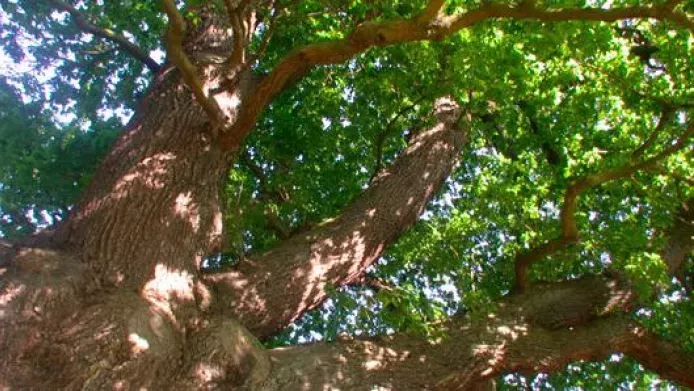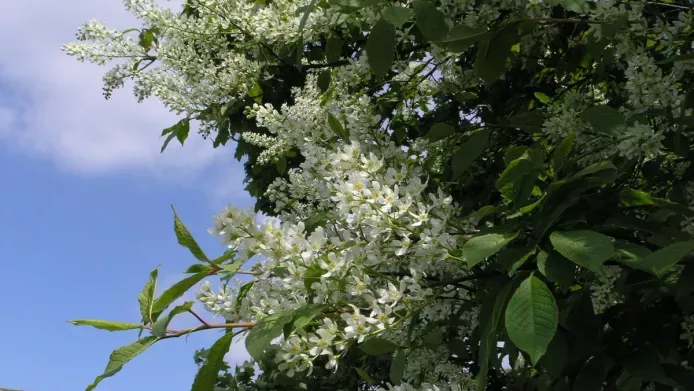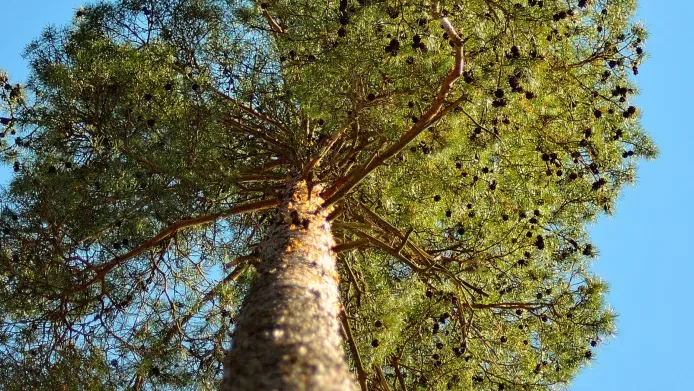Everybody has a story to tell about a tree. Whether it’s a story you’ve read or been told, a tradition that brings a tree into your life (think Christmas tree!), or more direct engagement with growing or being with trees. People have been culturally, emotionally, and spiritually connected to trees for millennia. And trees directly affect all our lives, from the air we breathe to the food we eat to the benches we sit on.
For National Tree Week, some of the Grow Wild team thought they would share a bit about their favourite UK native trees.
Silver Birch (Betula pendula)
"My favourite native tree is silver birch because it makes me feel like I’ve stepped into Narnia!”
- Polly, Grow Wild and Youth Programme Manager

Silver birch is a pioneer species, meaning it can establish on bare ground and 'colonise' barren environments. These beautiful trees have been growing in the UK since the end of the Ice Age.
Silver birch trees symbolise purity and renewal, and for good reason: as well as adding a silver-white shimmer to the landscape, gardeners grow silver birch to improve soil quality and provide a light canopy to encourage grasses and woodland wildflowers such as violets and wood anemones to grow.
Silver birch trees have a symbiotic relationship with the fly agaric fungus (Amanita muscaria). The trees offer sugars to the fungi, and in return the fungi help the tree absorb soil nutrients.
Black Poplar (Populus nigra ssp. betulifolia)
“It’s hard to pick one, but a favourite tree of mine is the little-known black poplar, native to where I grew up in East Anglia. The species is very rare, and many of the only remaining female trees are in Suffolk. Black poplar are sometimes referred to as Suffolk’s cotton trees because they have white fluffy seeds.”
- Chloe A, Grow Wild Engagement Assistant
 Black poplar trees are depicted in John Constable’s 1821 painting ‘The Hay Wain’.
Black poplar trees are depicted in John Constable’s 1821 painting ‘The Hay Wain’.
Native Black Poplars used to commonly grow nearby rivers and floodplains in East Anglia and across England. They rely on the wind to carry pollen from the male trees to fertilise the female trees nearby, and then to spread the seeds. In order to successfully take hold, seeds need specific damp and muddy margins of wetlands and riverbanks. Historically land drainage and timber use has threatened the species. There are only 7,000 left in the UK, and only less than 10% of these are female.
Yew trees (Taxus baccata)
“I am in awe of Yew trees, mostly because they're like a living history book for the UK. They have grabbed the titles for the three oldest living trees in the country. These guys are estimated to be between 2000 to 3000 years old, meaning they might have been about since the Bronze Age! It's wild to think about how some ancient trees have been part of the UK landscape for so long.”
– Gaia, Engagement & Training Officer
 The Fortingall Yew, Perthshire, Scotland
The Fortingall Yew, Perthshire, Scotland
The oldest tree in the UK is the Fortingall Yew in Perthshire, thought to be over 2,000 years old, possibly as old as 5,000 years. Yews are not only the oldest but also considered as some of the most sacred trees. Like many ancient yews, this tree is in a Christian churchyard.
Yew is toxic when ingested, and has long been associated with death, resurrection, and immortality.
What is an ancient tree?
An individual tree is considered ancient once it has reached a certain age. This age varies depending on the species. A yew tree is ancient at 800-900 years old, an oak tree at 400 years old.
Ancient trees play an incredibly important role in UK ecosystems. They provide unique habitats that have developed over centuries to support thousands of different species, from fungi to invertebrates to animals like bats, owls and pine martens, which live in holes in the trees.
The Woodland Trust has an Ancient Tree Inventory, in which 190,000 trees have been recorded so far. If you know an ancient tree you can add a tree here: Ancient Tree Inventory - Woodland Trust
Oak (Quercus robur)
“Two of my favourite UK native trees are the common oak (Quercus robur) and bird cherry (Prunus padus). I was lucky that we had both of these in our garden when I was growing up and I have memories of hiding behind the oak tree when playing games outside and also collecting blossom petals that fell from the cherry tree in spring.”
- Chloe B, Engagement & Training manager
 Image © Board of Trustees, RBG Kew
Image © Board of Trustees, RBG Kew
Oak trees support the most biodiversity of all UK native tree species. Steeped in myth and symbolism since ancient times, oaks are often associated with strength, durability and wisdom.
Oak trees are prone to lightning strikes due to their high water content and the fact that they are often the tallest living things in the landscape. Unsurprising, the, that oaks have been associated with the gods of thunder and lightening such as Zeus (Greek) and Jupiter (Roman).
Bird Cherry (Prunus padus)
 Image © RBG Kew
Image © RBG Kew
Bird cherry is a beautiful tree adored by much wildlife, including - you guessed it - birds! Blackbird and song thrush devour the cherries of this tree when they emerge in summer, as do mammals such as mice and badgers.
Bird cherry is native to the whole of mainland Britain and Northern Ireland, apart from southern England where it is much rarer, although has gradually become naturalised through planting.
Field maple (Acer campestre)
"My favourite native tree is the field maple because it is so colourful in autumn!”
- Robin, Communications Executive
Like other maple trees, the beautiful golden-yellow leaves of field maple brighten up the autumn. The sap from this tree can also be made into maple syrup!
Field maple is a relatively small maple tree that grows near hedgerows, scrub and woodland edges, native to England and Wales. Because it is tolerant of pollution, it is increasingly grown in urban areas.
In European folklore, field maple is said to have protect houses from bats if placed around the entrance.
This National Tree Week, The Tree Council is encouraging people to ‘grow a tree in ‘23’! For guidance and inspiration, visit their website and check out our blogs below.
More from the blog


